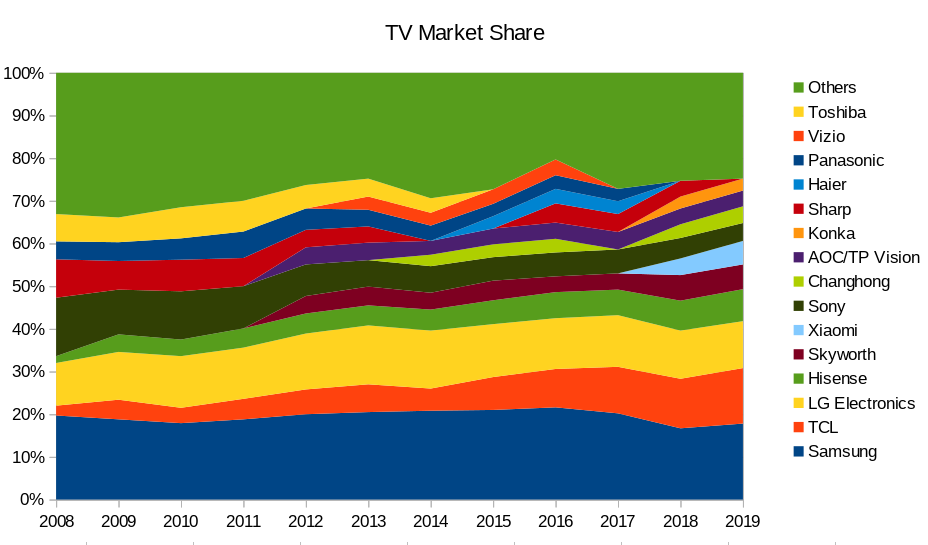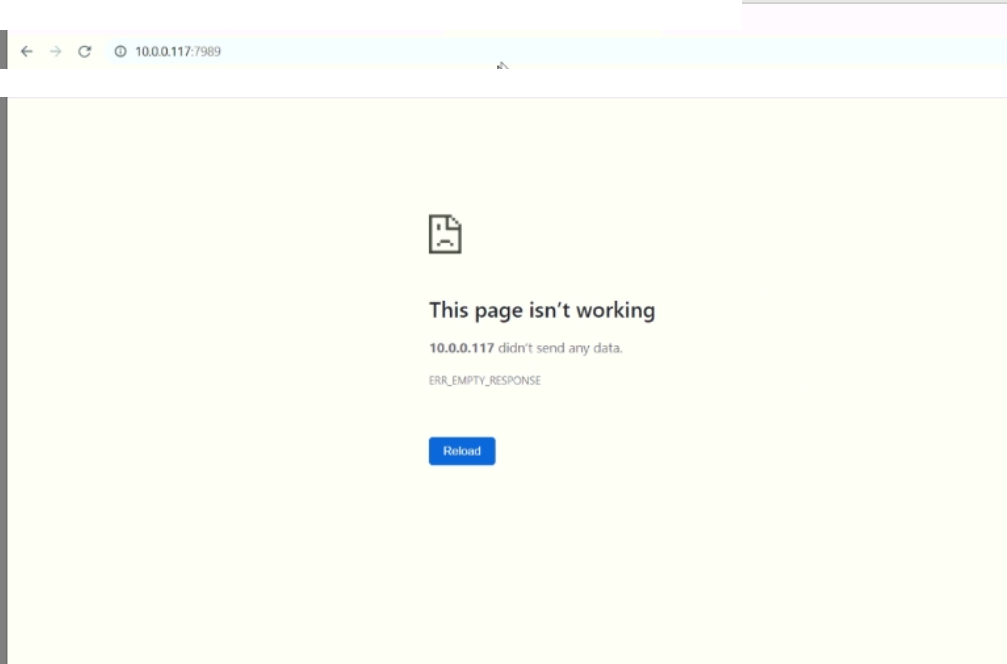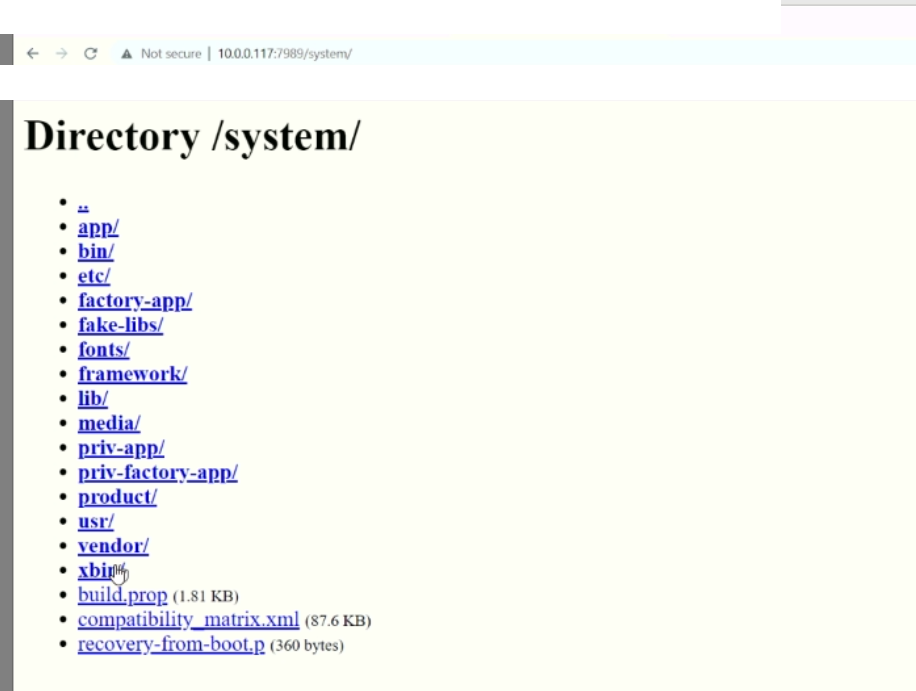The following piece is the culmination of a three-month long investigation into Smart TVs running Android. Having lived through this research experience, I can wholeheartedly say that there were multiple moments that I, and another security researcher that I met along the way, couldn’t believe what was happening. On multiple occasions I found myself feeling as though, “you couldn’t even make this up…”
I’m a security researcher, a freelance developer, and a hacker.
Please follow me on Twitter @sickcodes here: https://twitter.com/sickcodes
The second researcher in this story is John Jackson: https://twitter.com/johnjhacking, an Application Security Engineer with Shutterstock, and a hacker.
We met about half way through this, and I have included his experience too.
UPDATE: April 2, 2021. TCL now has a VDP! https://src.tcl.com/en/index
Since our research was published in November 2020, many things happened both positive and negative. One very impressive positive outcome is TCL has actually taken on-board many of the suggestions we made regarding their security. In my professional opinion, I think it is one of the most comprehensive Bug Bounty programs I’ve seen. They made some very impressive changes and John & myself (sickcodes) are pretty impressed: https://src.tcl.com/en/index
Initial Research
Near the end of September, while conducting research into low-end Android boxes, I came across a number of serious flaws in the way in which these devices were being designed.
Without delving into the nuances of each device, all of the Smart TV products are Android based.
There are four types of TV products in the TV market:
- TV Sticks
- TV Boxes
- Smart TVs
- Android TVs
All of them are ARM based single board computers (SBCs). Most of the dies are 32bit, some are 64bit, but all of them are like a little Raspberry Pi competitor, focusing on GPU performance through the small, but powerful, Mali GPUs.
Some of the products that I investigated were “factory-flawed” and deliberately insecure.
First Blood
On 2020-09-20, I discovered some ridiculous security shortfalls in the TV Sticks.
NOTE: TCL does not make TV sticks that are vulnerable. Only TCL Android TVs are affected. The following vulnerabilities refer to other products that I was testing at the time before finding the TCL vulnerability that is discussed in depth after the nmap scaps below.
Each stick that I tested had at least one of the following major security flaws.
- Port 22 open and allowing SSH access as root:root out of the box
- Port 5555 open and allowing unauthenticated android (adb) as root:root out of the box
- Rooted device, with world-executable su binaries in multiple locations
- Open WiFi network with adb and ssh daemons running
In effect, if you had a thousand of these devices, you could worm through all of them, taking advantage of the dual WiFi, plain-text WAN router credentials, and the ability to then hop from the TV stick, to the router, MITM the router, search for more vulnerable devices from the larger, more powerful router, and truly “surf the internet”.
Proof of Concept
# connect to the device's open WiFi network without any password adb connect 192.168.1.1 adb shell su whoami # root
Having witnessed how dismal the security was on these devices, or lack thereof, my plan was to write a really big proof of concept, in the form of an actual shell based worm, that would hop between the 4 or 5 TV sticks that I had.
Speaking to an associate about my idea, we ended up chatting about real Android TVs.
Suddenly, I thought, “If these sticks are the same, just little Rockchip & Amlogic CPUs, then what is so special about Smart TVs?”
Since I don’t actually have an Android Television to test, I asked my friend what type of Smart TV does he have and is it running Android?
His answer was, “TCL and not sure.”
I hadn’t really heard much about TCL, but it turns out TCL is a huge Chinese electronics manufacturing company.
TCL has been growing their global market share, at a remarkable rate.
According to a Forbes article, they only launched in the United States in 2013 and sales began on Amazon: https://www.forbes.com/sites/sethporges/2016/11/14/how-a-no-name-chinese-tv-brand-came-to-dominate-the-amazon-charts/?sh=15fd0d52f096

With their Amazon success, TCL began targeting other large markets.
The key point here is that they aren’t Samsung or LG, but they ARE selling millions of TV sets…
We did a remote desktop session and I ran a trivial nmap scan on the TV to see what it was running out of the box.
Here is the nmap scan:
Starting Nmap 7.91 ( https://nmap.org ) at 2020-10-16 21:55 UTC … Scanning 10.0.0.117 [65535 ports] Discovered open port 6550/tcp on 10.0.0.117 Discovered open port 8012/tcp on 10.0.0.117 Discovered open port 6466/tcp on 10.0.0.117 Discovered open port 8009/tcp on 10.0.0.117 Discovered open port 9000/tcp on 10.0.0.117 Discovered open port 8443/tcp on 10.0.0.117 Discovered open port 10101/tcp on 10.0.0.117 Discovered open port 46211/tcp on 10.0.0.117 Discovered open port 7989/tcp on 10.0.0.117 Discovered open port 6467/tcp on 10.0.0.117 Discovered open port 6559/tcp on 10.0.0.117 Discovered open port 6553/tcp on 10.0.0.117 Discovered open port 4332/tcp on 10.0.0.117 Discovered open port 8008/tcp on 10.0.0.117 Completed SYN Stealth Scan at 21:56, 20.40s elapsed (65535 total ports) Initiating Service scan at 21:56 Scanning 14 services on 10.0.0.117 … Completed Service scan at 21:58, 156.41s elapsed (14 services on 1 host) Not shown: 65521 closed ports
If you nmap your Android mobile phone, you will generally find 0 open TCP ports.
Zero.
So why does a TV need so many open ports?
While there are some reasons why TVs should have open ports, some of the above services warranted much deeper investigation.
Since I was in a remote desktop session, I just entered all the URLs manually into his web browser.
http://10.0.0.117:6550 http://10.0.0.117:8012 http://10.0.0.117:6466 http://10.0.0.117:8009 http://10.0.0.117:9000 http://10.0.0.117:8443 http://10.0.0.117:10101 http://10.0.0.117:46211 http://10.0.0.117:7989 http://10.0.0.117:6467 http://10.0.0.117:6559 http://10.0.0.117:6553 http://10.0.0.117:4332 http://10.0.0.117:8008
I also tested the https:// editions:
https://10.0.0.117:6550 https://10.0.0.117:8012 https://10.0.0.117:6466 https://10.0.0.117:8009 https://10.0.0.117:9000 https://10.0.0.117:8443 https://10.0.0.117:10101 https://10.0.0.117:46211 https://10.0.0.117:7989 https://10.0.0.117:6467 https://10.0.0.117:6559 https://10.0.0.117:6553 https://10.0.0.117:4332 https://10.0.0.117:8008
Some of the pages were blank white pages. This can indicate an API endpoint.
Some of the pages just hang the browser.
Then the rest of the nmap scan came through…
PORT STATE SERVICE VERSION 4332/tcp open getty-focus? 6466/tcp open ssl/unknown | ssl-cert: Subject: commonName=atvremote/BeyondTV2/BeyondTV/BeyondTV2/unknown | Subject Alternative Name: email:android-tv-remote-support@google.com | Issuer: commonName=atvremote/BeyondTV2/BeyondTV/BeyondTV2/unknown | Public Key type: rsa | Public Key bits: 2048 | Signature Algorithm: sha256WithRSAEncryption … 6467/tcp open tcpwrapped 6550/tcp open fg-sysupdate? | fingerprint-strings: | NULL: |_ Version 4 6553/tcp open unknown 6559/tcp open unknown | fingerprint-strings: | GenericLines: … 7989/tcp open unknown | fingerprint-strings: | FourOhFourRequest: | HTTP/1.1 404 Not Found | Content-Type: text/plain | Date: Fri, 16 Oct 2020 10:57:17 GMT | Accept-Ranges: bytes | Connection: keep-alive | Content-Length: 26 | Error 404, file not found. | GenericLines: | HTTP/1.1 400 Bad Request | Content-Type: text/plain | Date: Fri, 16 Oct 2020 10:56:27 GMT | Connection: keep-alive | Content-Length: 56 | REQUEST: Syntax error. Usage: GET /example/file.html | SIPOptions: | HTTP/1.1 404 Not Found | Content-Type: text/plain | Date: Fri, 16 Oct 2020 10:57:37 GMT | Accept-Ranges: bytes | Connection: keep-alive | Content-Length: 26 |_ Error 404, file not found. 8008/tcp open http? |_http-title: Site doesn\'t have a title (text/html). 8009/tcp open ssl/castv2 Ninja Sphere Chromecast driver |_ajp-methods: Failed to get a valid response for the OPTION request 8012/tcp open unknown 8443/tcp open ssl/https-alt\? |_http-title: Site doesn\'t have a title (text/html). | ssl-cert: Subject: commonName=/organizationName=Google Inc/stateOrProvinceName=Washington/countryName=US | Issuer: commonName=TCL TV BeyondTV Realtek RTD2851 Cast ICA/organizationName=Google Inc/stateOrProvinceName=Washington/countryName=US 9000/tcp open ssl/cslistener? 10101/tcp open ssl/ezmeeting-2? 46211/tcp open tcpwrapped
Port 7989 was showing a 404 error, yet when I visit 10.0.0.117:7989 in the browser, an error is shown.
http://10.0.0.117:7989 did not return a page in the browser.

What kind of special web server doesn’t show an index page, but shows deeper pages?
I had recently done research on an IoT device that was serving CGI scripts from the / directory, so the first page I thought to test was init.rc
http://10.0.0.117:7989/init.rc
403 Forbidden.
Yikes.
This means that the file is exists but we are not authorized to view it.
Naturally, I tested some other Android directories:
http://10.0.0.117:7989/sdcard

If you work with computers, no matter whether it be mobile apps, web apps, websites, back-end, front-end, upend…
Ask yourself this question right now:
When in the history of your career…
Have you ever needed to serve the entire filesystem…
over http?
This becomes a really import question because this custom vendor firmware is currently installed in millions of TCL Android TVs around the world.
My friend who was actually on the phone to me while we were doing the remote desktop, was fairly surprised.
“Why can we see all the files in the TV?”
Port 7989 is not on the list of standard TCP/UDP ports by the Internet Assigned Numbers Authority (IANA), https://www.iana.org/assignments/service-names-port-numbers/service-names-port-numbers.txt
This means, without scanning all 65,535 ports, most scanners will skip that port.
Secondly, the actual root page is blank.
So in order to scan more than 1 page per port, port scan times will exponentially increase…
Curiously, I checked the IANA list for other ports that end with 989:
| ftps-data | 989 | tcp | ftp protocol, data, over TLS/SSL |
|---|---|---|---|
| tr-rsrb-p3 | 1989 | tcp | cisco |
| mshnet | 1989 | tcp | MHSnet |
| zarkov | 2989 | tcp | ZARKOV |
| bv-queryengine | 3989 | tcp | BindView-Query |
| parallel | 4989 | tcp | Parallel |
| wbem-https | 5989 | tcp | WBEM |
| sunwebadmins | 8989 | tcp | Sun |
| 9989-9989 | Unassigned | ||
| 10934-10989 | Unassigned |
Notably, 6989 and 7989 are missing.
In fact, the range 7983-7997 is unassigned by IANA.
Why would an Android device need a web server running on a non-standard port?
What kind of manufacturer publishes the whole file system of a device?
Contact Tracing – CVE-2020-27403
At this point, I drafted the first CVE Request and sent it off to MITRE.
A copy of the draft advisory was sent to TCL’s security@tcl.com email address, requesting that they confirm receipt of the report.
The email bounced, so I submitted a contact form via their website requesting immediate support and escalation to the security department.
As this was a Friday, I was not expecting a reply, but a few days passed by and MITRE did not reply either.
I double checked that the device was not covered by another Certificate Numbering Authority (CNA) and ended up working out, to my surprise, that TCL Corporation owns Alcatel.
In fact, they also own(ed) Blackberry Mobile.
Both of those brands are Open Handset Alliance members, and they are covered by the Google Android CNA.
So I resubmitted the report to the Android CNA.
A few more days passed and no reply from anyone yet.
Then I contacted a friend who put me in touch with a researcher, who had a contact of someone at the company. I emailed them.
Yet again, no reply.
I then publicly requested contact details of anyone at the TCL security team in this thread: https://community.disclose.io/t/looking-for-security-contact-at-tcl-corporation/39
Another researcher named John Jackson replied, and we connected on Twitter.
John had recently gone through a messy public disclosure with a company that threatened to sue him even though they had already stated, in writing, “the bug does not exist.”
This is where things get tough.
Requests for Assistance
John: I was browsing the disclose.io boards and saw Sick Codes’ post requesting assistance with disclosure for a major vulnerability that he found on TCL’s Smart TVs.
Seeing that he had attempted to contact the company through their phone support, contact forms, twitter, and email addresses – it was obvious that he wasn’t getting any response.
First and foremost, I replied on the board and connected with him on Twitter to validate the authenticity of the vulnerability.
It seemed like a legitimate issue, the Smart TV was exposing a random port and I could see a bunch of files on the client side. Working with Sick Codes, I dug a little deeper into the filesystem and noted that a lot of sensitive files could be accessed.
Nonetheless, not all of the sensitive files looked accessible and there were certain permission restrictions such as accessing the sensitive configuration files.
Turns out, a built-in directory existed on the TV and maintained root level permissions. The directory was nearly an identical clone of the exposed filesystem, and allowed us to circumvent any issues accessing various critical files
It was clear that utilizing this vulnerability could result in remote code execution or even quick network pivots with the intention of exploiting systems quickly with ransomware.
With a vast list of affected TV models enumerated from the exposed filesystem on the client-side, [or in other words millions of vulnerable TVs] I set out to help Sick Codes in the disclosure process.
Unfortunately, the result of my attempted disclosure was nearly identical to Sick Codes’, resulting in no response on Social Media or Email.
I called TCL and talked to a support representative. I urged her that we had a serious vulnerability on our hands and she stated that she had no contact info to the Security team, and didn’t even think/know if TCL had a Security team. She asked me if I wanted to disclose the vulnerability over the phone so that she could submit it into the ticketing system: I said no. It’s generally not the best practice to expose a highly sensitive vulnerability via a shared ticketed system.
Obviously, we had to approach other methodology so I contacted CERT to ask for assistance in disclosure. CERT did not respond to us initially.
Days later Sick Codes managed to acquire a name and point of contact at TCL. We reached out and after about a week, the company had acknowledged the vulnerability and stated that they would patch the issue. We asked for updates over the course of weeks, but they stopped responding to us. CERT finally responded and told us to disclose the vulnerability if that was the case.
Respectfully, John Jackson
Part 2: Backdoor Update Vulnerability – CVE-2020-28055
Sick Codes here again. It took 13 days for TCL Corporation to reply to our initial report.
Almost 2 weeks to confirm receipt of a security report, from the World’s 3rd largest TV manufacturer.
Second to that, but the TCL Security team actually confirmed in the same email, that they had fixed the vulnerability.
Serious questions must be raised at this point. Why did it take two weeks to reply, and how was it so easy to fix?
What Android service was stopped in the fix?
Will the TV function as expected without this overly permissive directory allowing anyone on the same network to download files on the TV?
It was at this time, I decided to try find some more vulnerabilities while we had the attention of the security team.
I went digging through .rc files looking for vendor specific changes.
Indeed, there were critical changes made by TCL to several folders on the TV file system that should be absolutely locked down.
In the file:
/system/vendor/etc/init/hw/init.rtd285o.rc
I found the following critical errors:
#tcl save data directory mkdir /data/vendor/tcl 0777 #tcl oad data directory mkdir /data/vendor/upgrade 0777 mkdir /var/TerminalManager 0777
This means that these folders are now writable, by all users on the file system.
/data/vendor/tcl contains critical files to operate the TV.
These files should not be writable by arbitrary users, or potentially malicious apps or APKs.
One can only guess what consequences having read & write access to the TCL updates folder might have…
Secondly, what I found in “TerminalManager_Remote” was a little head-turning:
TerminalManager is an App, named TerminalManager_Remote.apk
Unpacking the APK contains the following configuration file.
[cwmp] enable=1; soap_env=SOAP-ENV soap_enc=SOAP-ENC acs_auth=1 cpe_auth=0 event_filename=/etc/cwmpevent.bin ###CN official url acs_url=http://admin.acs.huan.tv/acs logserver_url=http://service.acs.huan.tv/acs/uploadLog fileserver_url=http://admin.acs.huan.tv/file/uploadFile screenserver_url=http://admin.acs.huan.tv/file/uploadScreen longconnect_url=http://socket.acs.huan.tv logserver_url_stat=http://service.acs.huan.tv/acs/uploadLogs ###HK area official url HK_acs_url=http://as.admin.acs.huan.tv/acs HK_logserver_url=http://as.service.acs.huan.tv/acs/uploadLog HK_fileserver_url=http://as.admin.acs.huan.tv/file/uploadFile HK_screenserver_url=http://as.admin.acs.huan.tv/file/uploadScreen HK_longconnect_url=http://as.socket.acs.huan.tv HK_logserver_url_stat=http://as.service.acs.huan.tv/acs/uploadLogs ###TW area official url TW_acs_url=http://as.admin.acs.huan.tv/acs TW_logserver_url=http://as.service.acs.huan.tv/acs/uploadLog TW_fileserver_url=http://as.admin.acs.huan.tv/file/uploadFile TW_screenserver_url=http://as.admin.acs.huan.tv/file/uploadScreen TW_longconnect_url=http://as.socket.acs.huan.tv TW_logserver_url_stat=http://as.service.acs.huan.tv/acs/uploadLogs ###AP area official url AP_acs_url=http://as.admin.acs.huan.tv/acs AP_logserver_url=http://as.service.acs.huan.tv/acs/uploadLog AP_fileserver_url=http://as.admin.acs.huan.tv/file/uploadFile AP_screenserver_url=http://as.admin.acs.huan.tv/file/uploadScreen AP_longconnect_url=http://as.socket.acs.huan.tv AP_logserver_url_stat=http://as.service.acs.huan.tv/acs/uploadLogs ###AU area official url AU_acs_url=http://as.admin.acs.huan.tv/acs AU_logserver_url=http://as.service.acs.huan.tv/acs/uploadLog AU_fileserver_url=http://as.admin.acs.huan.tv/file/uploadFile AU_screenserver_url=http://as.admin.acs.huan.tv/file/uploadScreen AU_longconnect_url=http://as.socket.acs.huan.tv AU_logserver_url_stat=http://as.service.acs.huan.tv/acs/uploadLogs ###ME area official url ME_acs_url=http://eu.admin.acs.huan.tv/acs ME_logserver_url=http://eu.service.acs.huan.tv/acs/uploadLog ME_fileserver_url=http://eu.admin.acs.huan.tv/file/uploadFile ME_screenserver_url=http://eu.admin.acs.huan.tv/file/uploadScreen ME_longconnect_url=http://eu.socket.acs.huan.tv ME_logserver_url_stat=http://eu.service.acs.huan.tv/acs/uploadLogs ###EU area official url EU_acs_url=http://eu.admin.acs.huan.tv/acs EU_logserver_url=http://eu.service.acs.huan.tv/acs/uploadLog EU_fileserver_url=http://eu.admin.acs.huan.tv/file/uploadFile EU_screenserver_url=http://eu.admin.acs.huan.tv/file/uploadScreen EU_longconnect_url=http://eu.socket.acs.huan.tv EU_logserver_url_stat=http://eu.service.acs.huan.tv/acs/uploadLogs ###AF area official url AF_acs_url=http://eu.admin.acs.huan.tv/acs AF_logserver_url=http://eu.service.acs.huan.tv/acs/uploadLog AF_fileserver_url=http://eu.admin.acs.huan.tv/file/uploadFile AF_screenserver_url=http://eu.admin.acs.huan.tv/file/uploadScreen AF_longconnect_url=http://eu.socket.acs.huan.tv AF_logserver_url_stat=http://eu.service.acs.huan.tv/acs/uploadLogs ###NA area official url NA_acs_url=http://na.admin.acs.huan.tv/acs NA_logserver_url=http://na.service.acs.huan.tv/acs/uploadLog NA_fileserver_url=http://na.admin.acs.huan.tv/file/uploadFile NA_screenserver_url=http://na.admin.acs.huan.tv/file/uploadScreen NA_longconnect_url=http://na.socket.acs.huan.tv NA_logserver_url_stat=http://na.service.acs.huan.tv/acs/uploadLogs ###LA area official url LA_acs_url=http://na.admin.acs.huan.tv/acs LA_logserver_url=http://na.service.acs.huan.tv/acs/uploadLog LA_fileserver_url=http://na.admin.acs.huan.tv/file/uploadFile LA_screenserver_url=http://na.admin.acs.huan.tv/file/uploadScreen LA_longconnect_url=http://na.socket.acs.huan.tv LA_logserver_url_stat=http://na.service.acs.huan.tv/acs/uploadLogs ###test url test_acs_url=http://103.235.237.119:8080/acs_manager/acs test_longconnect_url=http://103.235.237.119:6488 test_logserver_url=http://103.235.237.119:8080/acs_web/acs/uploadLog test_fileserver_url=http://103.235.237.119:8080/acs_manager/file/uploadFile test_screenserver_url=http://103.235.237.119:8080/acs_manager/file/uploadScreen test_logserver_url_stat=http://103.235.237.119:8080/acs_web/acs/uploadLogs ca_file=/etc/ca.pem ca_password=123456 cpe_manufacture=ChinaNMS cpe_oui=A00001 cpe_sn=30000000000000000 cpe_name=000000 cpe_pc=OT2800 cpe_specver=V1.0 cpe_hwver=V1.0 cpe_version=V1.2.7.29 cpe_username=cwmp cpe_password=cwmp acs_username=app1 acs_password=123456 [cwmpd] httpd_port=5400 http_timeout=-1
Inside this APK is is netcwmp. Which included the following administration controls:
https://github.com/netcwmp/netcwmp.git
SOAP/XML Parser SSL HTTP Server HTTP Client Ini config file Parser Digest Authentication GetRPCMethods Inform SetParameterValues GetParameterValues GetParameterNames Download Upload AddObject DeleteObject FactoryReset TransferComplete Reboot TR-069 Object Models Interface
Config File: acs_auth: ACS auth CPE cpe_auth: CPE auth ACS acs_url: ACS URL cpe_manufacture: Manufacture cpe_oui: OUI cpe_sn: CPE Serial Number cpe_name: CPE Name cpe_pc: CPE Product Class cpe_username: InternetGatewayDevice.ManagementServer.ConnectionRequestUsername cpe_password: InternetGatewayDevice.ManagementServer.ConnectionRequestPassword acs_username: InternetGatewayDevice.ManagementServer.Username acs_password: InternetGatewayDevice.ManagementServer.Password httpd_port: Http server listen port ca_file: ca pem file ca_password: ca password
As much as I’d like to answer the big question here, I don’t know if I can.
I don’t have the answer. TCL does, however.
The TV that I conducted preliminary tests on was silently patched. No update warning was sent.
The fact that they were able to identify the vulnerability, and have patched it on their side automatically, without user input is also lightly striking.
Please make your own conclusions from our research.
If you want more research write-ups and investigations, then keep us both on Twitter.
Follow me @SickCodes on Twitter: https://twitter.com/sickcodes
Follow @johnjhacking on Twitter: https://twitter.com/johnjhacking
Shortly after the confirmation email, MITRE issued us two CVE ID’s for the vulnerabilities discovered:
CVE-2020-27403
https://sick.codes/sick-2020-009
TCL Android Smart TV (All) – Exposure of Information Through Directory Listing – TCL Android TV Filesystem Browsable to Unauthenticated Attackers Over the Adjacent Network on Port 7989
CVE-2020-28055
https://sick.codes/SICK-2020-012
TCL Android Smart TV (All) – Incorrect Permission Assignment for Critical Vendor Resources – TCL Android TV Vendor Configuration & Upgrade Folders World Writable to Local Attacker
The Android robot is reproduced or modified from work created and shared by Google and used according to terms described in the https://creativecommons.org/licenses/by/3.0/ Creative Commons 3.0 Attribution License. Hand vector created by makyzz - www.freepik.com Cover image is created by Sick.Codes and free for use, modification, commercial use, for any purpose etc. under the Creative Commons 4.0 Attribution License. You may also choose to use the Sick.Codes cover image under the Public Domain license without attribution.





Hi there!
This is so unbelievably relieving and validating. I have suffered this sick code on my bedroom tv leading to monitoring and tracking of me and my girlfriend as well taping our cameras and calls. The tv paired all info would not keep to settings set by myself or any human, constantly screen sharing and cracked my shell leading to floods of Indian scammers and telephony fraud, stealing my zoom accounts, harassing with ai personalization, ransom attempts, and stealing of bio identifiers to access accounts/crypto; spoofing of my devices and identity theft. Implanted root files in my cloud accounts and duplicate all my delivery food orders to my Amex card. 20k debt, loss of work, health, terrorized family and partner, and ptsd. Not to mention I’m a telehealth doctor and they then harassed my clients. Nearly went insane.
Was there a case or class action? Any resources for support and seeking damages would be greatly appreciated. Thank you for your work.
Same hear. It has been 3 years of blocking me from true information. Fake apps,monitoring and losing information. Also messages that are not from me.
Please help!!! Everything I have read on this page is exactly what has been automatically installing on every 10 devices I own. I can not escape it and I feel so invaded. These hackers or whatever have complete control of all my devices and legit install fake apps and websites. Heck, this post probably won’t even go through. Everytime I look for help, it ends up being the hacker actually telling me how to hack instead of helping.
Same issue. Lots of traffic coming from TV throughout LAN. Scan showed similar ports to this write up. Have tried all sorts, don’t want to throw everything out and start over and feel there must be a resolution.
http://192.168.1.111:49153 (Philips 55PUS7503/12 Smart Android TV) gives only a “404 page not found” error. Tried to extend that address with Android directories and init.rc but they all gave a “404 page not found” error.
http://192.168.1.111:9080 gives “Status=OK” message but nothing else. Then there are few other ports that give an error message “didn’t send any data” when tried on a web browser.
This means you are okay.
`Status=OK` is some api that is used, health checking.
If nothing showed /init.rc as 403 forbidden, then it’s most likely that you are not vulnerable.
I am just starting to root around in my hisense 65″ qled android TV. I don’t recall the model number but it is a 2020 device. I have not found anything as egregious as what is described here, though I am still exploring the open ports I have found (which is what brought me here).
To use an android TV safely in spite of its vulnerabilities, put it on its own VLAN and also put a VPN proxy on that VLAN. Direct the TV to use the VPN proxy as its gateway. On the upstream router, block all access to the VLAN from either direction, except for access required by the VPN proxy. Then, connect the TV to the VLAN using an ethernet connection. This likely will require you to use a trunking switch, but will lock your TV down completely.
No inbound connections from anywhere will arrive at the TV; the VPN will prevent that because the external VPN server (the other end of your tunnel) will have no idea how to route any inbound traffic that is aimed at your TV, and the address of that remote server will show as the address of your TV. This prevents any remote control of the TV.
I do this, and in addition I run a DNS server on my network (pihole) which is configured to block all the tracking that the TV tries to do.
Very nice setup! Fully isolating devices like you have done should be much more commonplace these days. Thanks for the comment!
I have a
Hisense 65″ H9F Android TV.
It recently updated to Android 10.
I’m wondering if this TV has security issues. I always get messages that say there’s vulnerabilities if I cast something to the TV.
Should I stop using it.
is there a safer way to use Android on the TV or my better off with the Roku TV.
Any help would be appreciated as I want to buy a new TV.
Roku TV’s are fine. We spoke to Roku and they are not vulnerable to this issue. This specifically affects TCL Android TVs.
TCL Roku TVs are fine, even though they most likely come from the same factory.
I think it’s obvious what they are doing: mass surveillance for their government, which of course is a majority owner of every company which operates inside of the country.
I can’t say with certainty anything, but they do have to absolute ability to control the TV remotely.